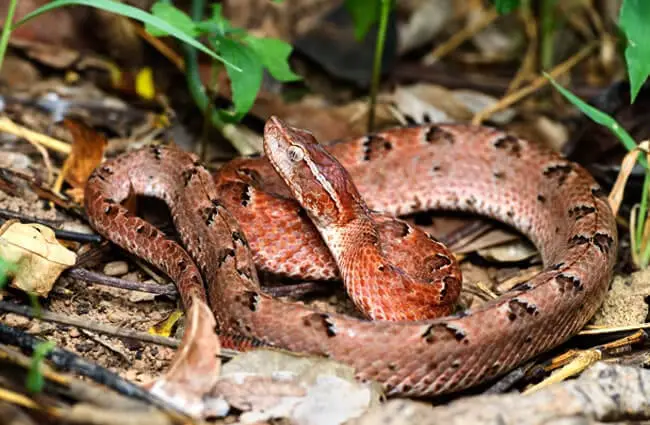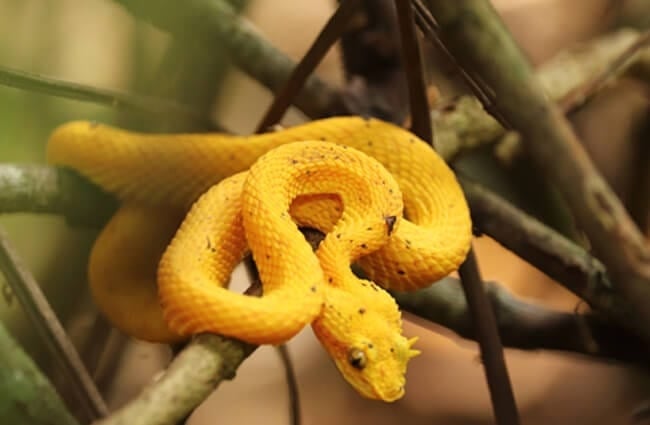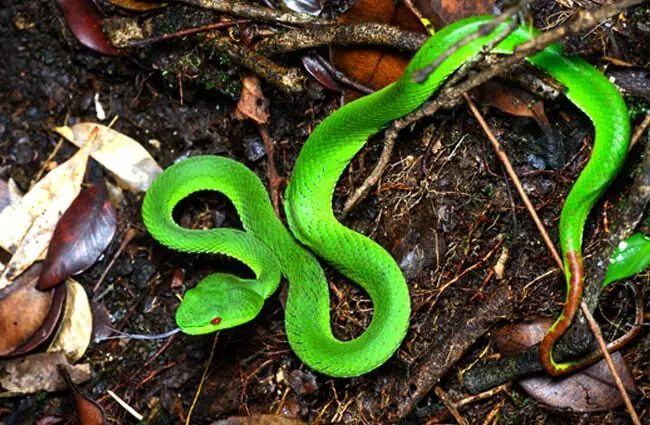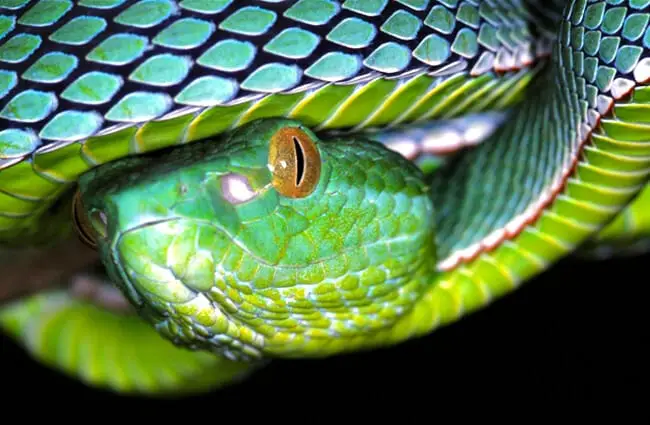The world of snakes often evokes a mix of fascination and apprehension, and among these scaled reptiles, pit vipers hold a particularly intriguing place. These venomous snakes, renowned for their heat sensing abilities and often striking coloration, are a diverse group found throughout the Americas and parts of Asia. This comprehensive guide delves into the biology, behavior, and ecological role of pit vipers, offering insights for students, wildlife enthusiasts, and anyone seeking to understand these remarkable creatures.

What are Pit Vipers?
Pit vipers belong to the subfamily Crotalinae, within the family Viperidae. The name “pit viper” refers to the distinctive heat sensing pit located between the eye and nostril on each side of the head. These pits are crucial for detecting warm‑blooded prey, even in complete darkness. Approximately 23 genera and over 70 species comprise this fascinating group, exhibiting a wide range of sizes, colors, and habitats. Common examples include rattlesnakes, copperheads, cottonmouths, and various Asian pit vipers.
Key Characteristics
- Heat Sensing Pits: These organs allow detection of infrared radiation emitted by prey, enhancing hunting efficiency.
- Vertical Pupils: Similar to cats, pit vipers have elliptical pupils that aid in depth perception and low‑light vision.
- Triangular Head: The characteristic broad head is due to the presence of venom glands.
- Fangs: Pit vipers possess hinged fangs that fold back against the roof of the mouth when not in use, allowing for efficient venom delivery.
Habitat and Distribution
Pit vipers are found primarily in North and South America, with a smaller distribution in Asia. They inhabit a diverse range of ecosystems, including forests, grasslands, deserts, and swamps. Their distribution is closely linked to the availability of suitable prey and shelter. Rattlesnakes, for example, are common in the arid and semi‑arid regions of the American Southwest, while copperheads prefer the forested areas of the eastern United States. Asian pit vipers often inhabit dense tropical rainforests.

Diet and Hunting Strategies
Pit vipers are carnivores, feeding primarily on rodents, birds, and amphibians. Their diet varies depending on their size, habitat, and prey availability. Hunting strategies rely heavily on ambush predation. Pit vipers lie in wait, camouflaged among vegetation, and strike when prey comes within range. The heat sensing pits allow them to locate prey even in complete darkness, making them effective nocturnal hunters. Once prey is struck, venom is injected, immobilizing or killing the animal. The snake then swallows the prey whole.
Reproduction and Life Cycle
Most pit vipers are ovoviviparous, meaning that eggs develop inside the mother’s body and hatch internally, resulting in live birth. The number of offspring varies significantly between species, ranging from a few to over 20 young. Mating typically occurs in the spring or fall. Young pit vipers are independent from birth and must immediately fend for themselves. They grow rapidly, shedding their skin multiple times per year. Pit vipers can live for up to about 20 years in the wild.

Ecological Role and Interactions
Pit vipers play an important role in maintaining the balance of ecosystems. As predators, they help control populations of rodents and other small animals. They also serve as prey for larger predators, such as hawks, eagles, and coyotes. Their venom has been studied for potential medicinal applications, including the development of drugs to treat heart disease and stroke. Pit vipers interact with other species in complex ways. Certain birds have developed resistance to pit viper venom and may prey on them. Other animals, such as opossums, are resistant to pit viper venom and may scavenge on snakes that have been killed by other predators.
Pit Vipers and Humans
Human encounters with pit vipers can be dangerous, as their venom is potent and can cause severe pain, swelling, and tissue damage. Most bites occur when people accidentally step on or disturb a snake. It is crucial to avoid approaching or handling pit vipers in the wild. If bitten, seek immediate medical attention. Antivenom is available for many pit viper species, but it is most effective when administered quickly.
Evolutionary History
The evolutionary history of pit vipers is a fascinating area of study. Fossil evidence suggests that the ancestors of pit vipers originated in Asia during the Eocene epoch, around 56 to 34 million years ago. From Asia, they dispersed to North and South America via the Bering land bridge. The development of the heat sensing pit is believed to have been a key adaptation that allowed pit vipers to become successful nocturnal hunters. Phylogenetic studies have revealed complex relationships among different pit viper genera, suggesting that the group has undergone significant diversification over millions of years.

For the Avid Wildlife Enthusiast: Finding Pit Vipers in the Wild
Locating pit vipers requires patience, caution, and knowledge of their preferred habitats. Focus on areas with ample cover, such as forests, grasslands, and rocky outcrops. Look for them basking in the sun or concealed among vegetation. Be especially vigilant during the warmer months when snakes are more active. Remember to wear appropriate footwear and clothing, and never attempt to handle a snake. Utilize a long‑handed guide for observation, and maintain a safe distance at all times. Observe from a distance and respect their space.
For the Zookeeper: Caring for Pit Vipers in Captivity
Caring for pit vipers in captivity requires specialized knowledge and experience. Provide a spacious enclosure with appropriate temperature and humidity gradients. Offer a varied diet of rodents and other suitable prey. Monitor the snake’s health closely for signs of illness or injury. Implement strict safety protocols to prevent accidental bites. Provide enrichment activities to stimulate natural behaviors. Regular health checks and a carefully designed habitat are vital for the well‑being of these animals. Never handle without proper training and safety equipment.
Fun Facts About Pit Vipers
- Rattlesnakes use their rattles to warn potential predators of their presence.
- Copperheads are named for their copper-colored heads.
- Cottonmouths are known for their white, cotton-like mouths, which they display when threatened.
- Some pit viper species can deliver a dry bite, meaning that they do not inject venom.
- Pit viper venom contains enzymes that break down tissues, causing pain and swelling.

Conclusion
Pit vipers are remarkable creatures that play a vital role in the ecosystems they inhabit. Their unique adaptations, complex behaviors, and evolutionary history make them a fascinating subject of study. By understanding these snakes and respecting their place in the natural world, we can ensure their continued survival for generations to come. Continued research and conservation efforts are essential to protect these incredible animals and the habitats they depend on.


![Red Angus Closeup of a beautiful Red Angus cowPhoto by: U.S. Department of Agriculture [pubic domain]https://creativecommons.org/licenses/by/2.0/](https://animals.net/wp-content/uploads/2020/03/Red-Angus-4-238x178.jpg)




![Red Angus Closeup of a beautiful Red Angus cowPhoto by: U.S. Department of Agriculture [pubic domain]https://creativecommons.org/licenses/by/2.0/](https://animals.net/wp-content/uploads/2020/03/Red-Angus-4-100x75.jpg)

